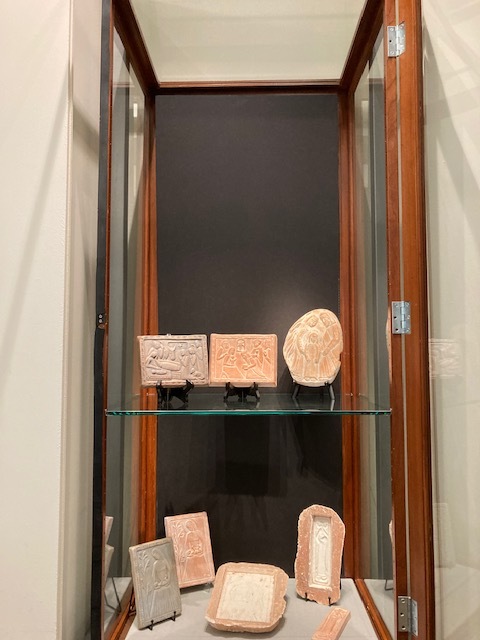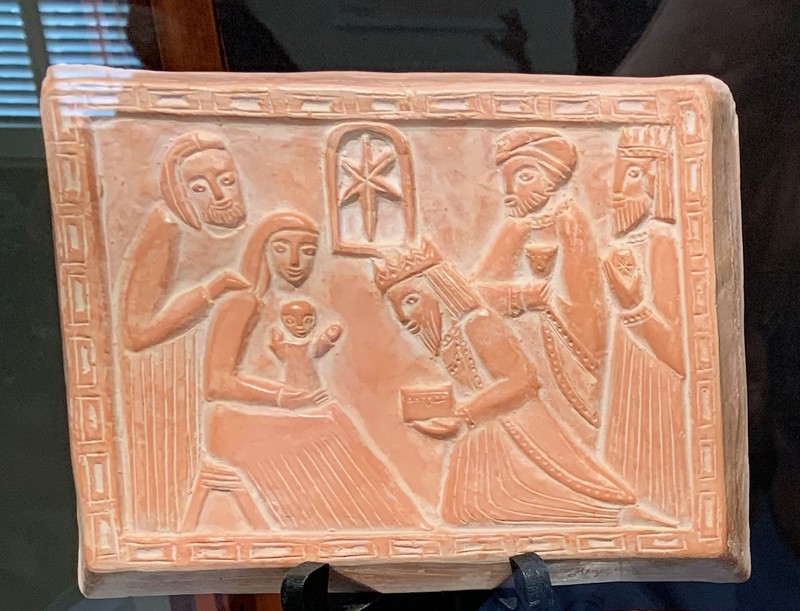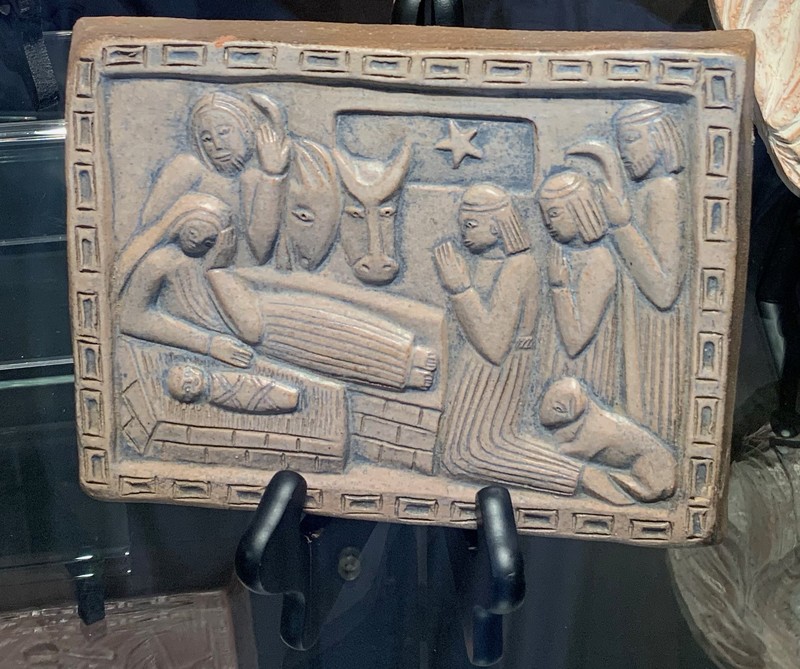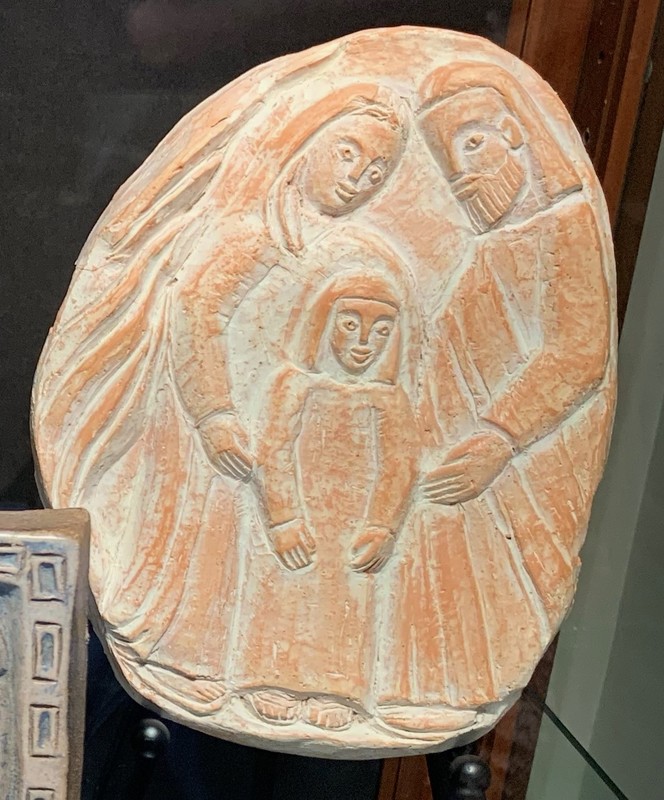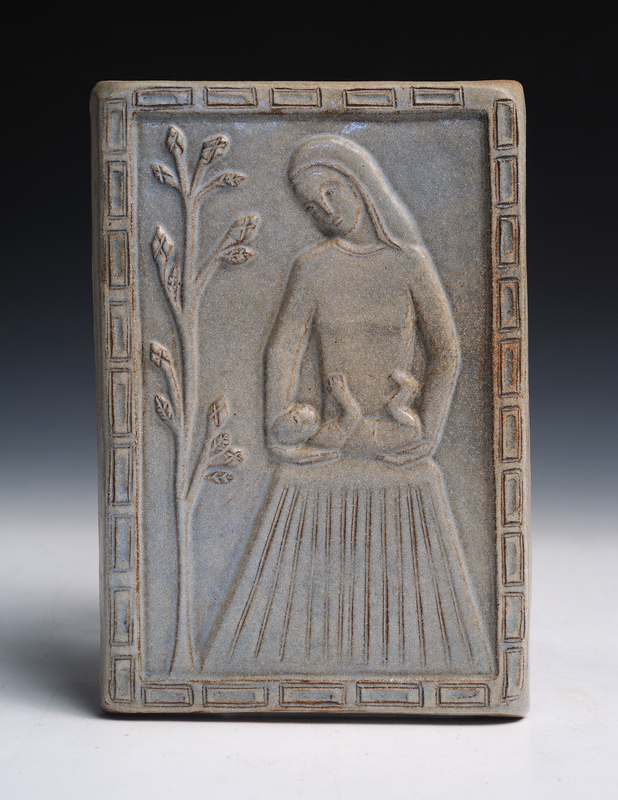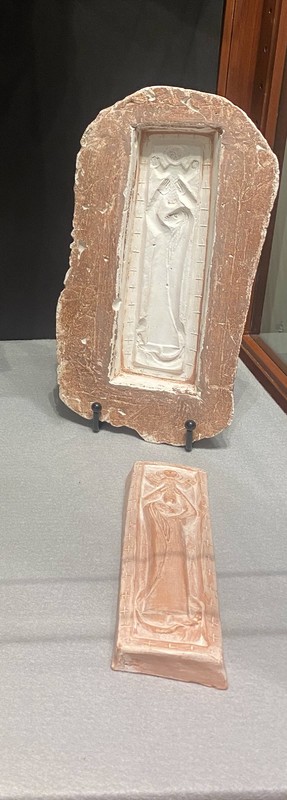Nativity Tiles
Helen Schrider Higgins revisited the Christian religious theme of the Madonna and Child as well as the Nativity scenes of the birth of Christ over many years. She is a lifelong art museum goer and regularly visited the National Gallery of Art in Washington DC where she was inspired by the galleries devoted to Medieval and Renaissance art in the West Wing of the collection.
The Madonna and Child in Christian iconography depicts the Mother Mary either with or without the Christ Child. While the depictions may be narrative, the “Madonna and Child” rose to the level of devotional images in the tradition of Christian art. The works in this case depict several Madonna and Child ceramic tiles, Nativity scenes as well as an unusually large original ceramic relief sculpture of the Holy Family. The members of the Holy Family were the Christ Child, the Virgin Mary and Saint Joseph. The depiction of the Holy Family in Christian iconography was not as widespread as that of the Madonna and Child until later centuries. This tile was likely produced in commemoration of the feast of the Holy Family which is the first Sunday after Christmas. This large organically shaped relief sculpture is an original work and was slightly damaged on the edge during the creation of the mold.
The two other tiles on the top are narrative works that depict two significant Nativity scenes in the New Testament. The tile with the grey glaze represents the story of the “Adoration of the Shepherds” and the terra cotta with the white slip glaze effect is a representation of the Star of Bethlehem or the “Gift of the Magi”.
The lower level of this case displays an early 1960’s work that Higgins called “Madonna with Spring Tree”. While stylistically similar to other New Testament works, it also has elongated figures somewhat similar to the figures in the “Rubaiyat of Omar Khayyam” series in the front hall case. The multiples with the mold of the “Madonna with Spring Tree” showcase how Higgins was able to create variation through the use of different glaze surfaces.
To view any of these objects in more detail, click on the thumbnail below.
